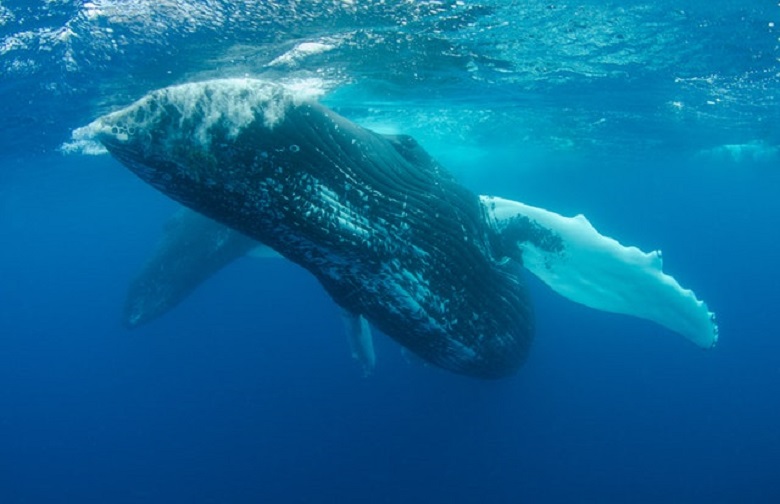In recent news, a dead blue whale washed up on a beach in California with a clean bite mark, indicating that it had been bitten in half by another creature. This is a highly unusual occurrence, as blue whales are the largest animals on Earth and are not typically prey for other animals.
The blue whale, which measured around 80 feet long, was found on the shore of Avila Beach near San Luis Obispo. The bite mark on the animal’s body was estimated to be around 30 feet wide, indicating that the creature responsible for the attack was also massive in size.
While it is not known exactly what creature could have caused such damage, some experts believe that it could have been a pod of killer whales, also known as orcas. These whales are known to hunt and kill other marine mammals, including other whale species. However, the size of the bite mark and the clean cut of the whale’s body suggests that the attack was not made by a pod of orcas, but instead by a single, massive animal.
Another possibility is that the blue whale was bitten by a large shark, such as a great white or a megalodon. These sharks are known to attack and bite large marine mammals, but it would be highly unusual for one to bite a blue whale in half.
The cause of the blue whale’s death is still uncertain, and more research is needed to determine what creature could have caused such damage. The whale’s body will be examined by marine biologists to try to determine the cause of death and to gather more information about the creature responsible for the attack.
The blue whale is a protected species and its population has been greatly affected by commercial whaling in the past century. The blue whale population has been recovering in recent years, but incidents like this highlight the importance of ongoing conservation efforts.
The cause of death is still uncertain and more research is needed to determine what creature could have caused such damage. The blue whale is a protected species and its population has been greatly affected by commercial whaling in the past century, and it’s important to continue the conservation efforts to protect this magnificent species.
Conclusion
In conclusion, the death of a blue whale that washed up on a California beach with a clean bite mark indicating it was bitten in half is a highly unusual occurrence. The size of the bite mark and the clean cut of the whale’s body suggests that the attack was not made by a pod of orcas, but instead by a single, massive animal. The cause of death is still uncertain and more research is needed to determine what creature could have caused such damage. The blue whale is a protected species and its population has been greatly affected by commercial whaling in the past century, and it’s important to continue the conservation efforts to protect this magnificent species.
FAQS
Q: What caused the blue whale to be bitten in half?
A: The cause of the blue whale’s death is still uncertain, and more research is needed to determine what creature could have caused such damage. Some experts believe that it could have been a pod of killer whales, also known as orcas, while others suggest that it could have been a large shark, such as a great white or a megalodon.
Q: Where was the blue whale found?
A: The blue whale was found on the shore of Avila Beach near San Luis Obispo, California.
Q: How long was the blue whale?
A: The blue whale measured around 80 feet long.
Q: How wide was the bite mark on the blue whale’s body?
A: The bite mark on the blue whale’s body was estimated to be around 30 feet wide.
Q: Are blue whales a protected species?
A: Yes, blue whales are a protected species and their population has been greatly affected by commercial whaling in the past century. Conservation efforts are ongoing to protect this species.
Q: Is it common for other animals to attack blue whales?
A: No, it is highly unusual for other animals to attack and kill blue whales as they are the largest animals on Earth and are not typically prey for other animals.






